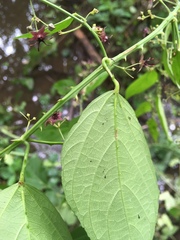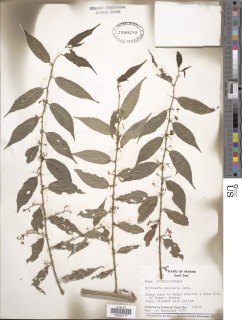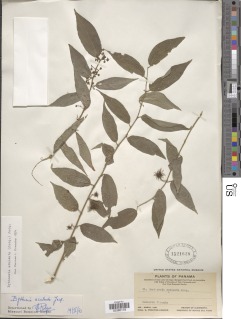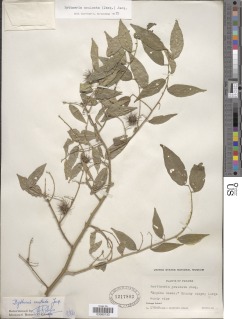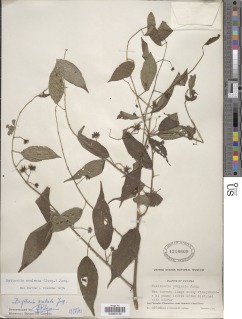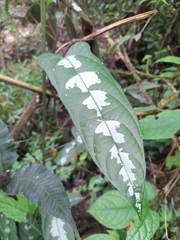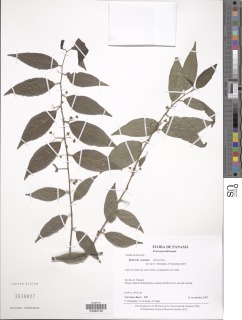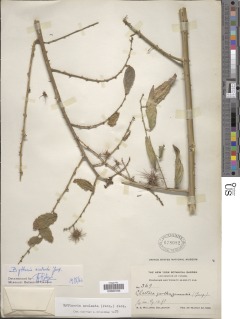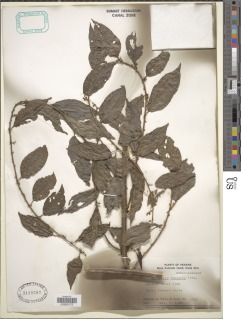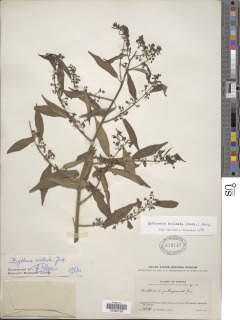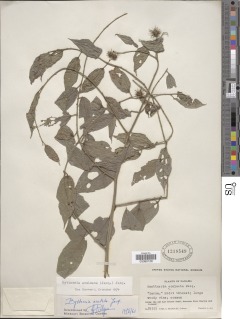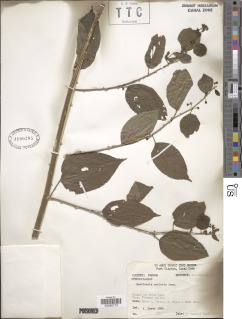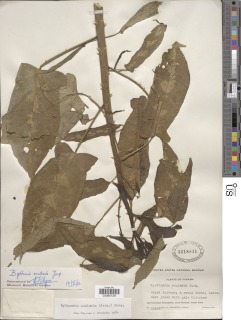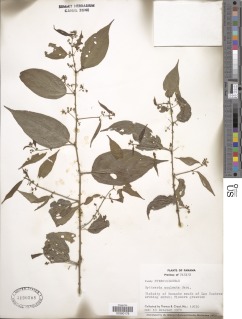

|
|
|
|
Family: Sterculiaceae
Bejuco rabo de iguana, more...Uña de gato
|
Descripción: Plantas trepadoras o lianas con el tronco hueco y cubierto de espinas arqueadas. Ramitas de forma cuadrangular y con espinas arqueadas. Hojas simples y alternas, de 5-13 x 3-10 cm, ovadas o lanceoladas, con ápice acuminado, bordes enteros o dentados hacia el ápice, base obtusa o redondeada. Las hojas presentan tres nervaduras que salen a partir de la base y a veces tienen espinas en la nervadura central del envés. Pecíolo de 0.5-1 cm de largo. Flores verde pálidas o amarillas. Frutos en cápsulas espinosas, de 0.5-1.5 cm de largo, verdes, tornándose negros al madurar. Especies Parecidas: A menudo se confunde con LK guazul Guazuma ulmifolia LK2 , pero G. ulmifolia es un árbol y las ramitas no tienen espinas. Jacq., Select. Stirp. Am. 76.1763 Espino hueco, Zarza, Rabo de iguana, Rangay Woody vine or scandent shrub; older trunk often breaking into 5 distinct, terete stems; stems 5-angulate and hollow; stems, petioles, and often midribs below with small, sharp, recurved prickles, the stems and petioles sometimes short-pilose on one side. Stipules triangular, 1-2 mm long, caducous; petioles 0.5-2 cm long (to 5 cm on juveniles); blades variable, usually lanceolate to elliptic, acuminate, obtuse to rounded, truncate, or subcordate, usually 4-11 cm long and 1.5-4.5 cm wide (juveniles to 19 cm long), entire to remotely serrate, glabrous or sparsely short-pilose above, often blotched with silver; palmate veins at base 3-5. Umbels axillary; peduncles and pedicels sparsely pubescent, slender; peduncles mostly 5-10 mm long; pedicels variable on a single inflorescence, 1-10 mm long; flowers few, 5-parted, white, yellow or greenish; calyx 5-lobed to near base, to 4 mm long, glabrous; petals linear-spatulate, ca 4 mm long but only 1 mm wide, yellowish; stamens 5, the staminal tube minute; anthers opposite petals; staminodia 5, alternate with petals; pistil minute; style very short; stigma inconspicuously 5-lobed (breaking into 5 cocci). Capsules globular, 1.5-2.5 cm diam (including spines), 5-lobed; seeds 5, reniform, ca 4 mm long, 2 mm wide, falling to display the 5-lobed receptacle. Croat 6767, Wetmore & Abbe 8. Occasional, in the forest. Seedlings, which are recognized by having leaf blades with a light medial discoloration, are often locally abundant in clearings. Flowers mostly in October and November. The fruits mature from December to February. Mexico to Bolivia; introduced into Polynesia. In Panama, known from tropical moist forest in the Canal Zone, Bocas del Toro, Veraguas, Panama, and Darién, from tropical dry forest in Coclé and Panama, and from premontane moist forest in the Canal Zone. See Fig. 377. Bocas Species Database Distribution: Isla Colón Characteristics: Shrub |


